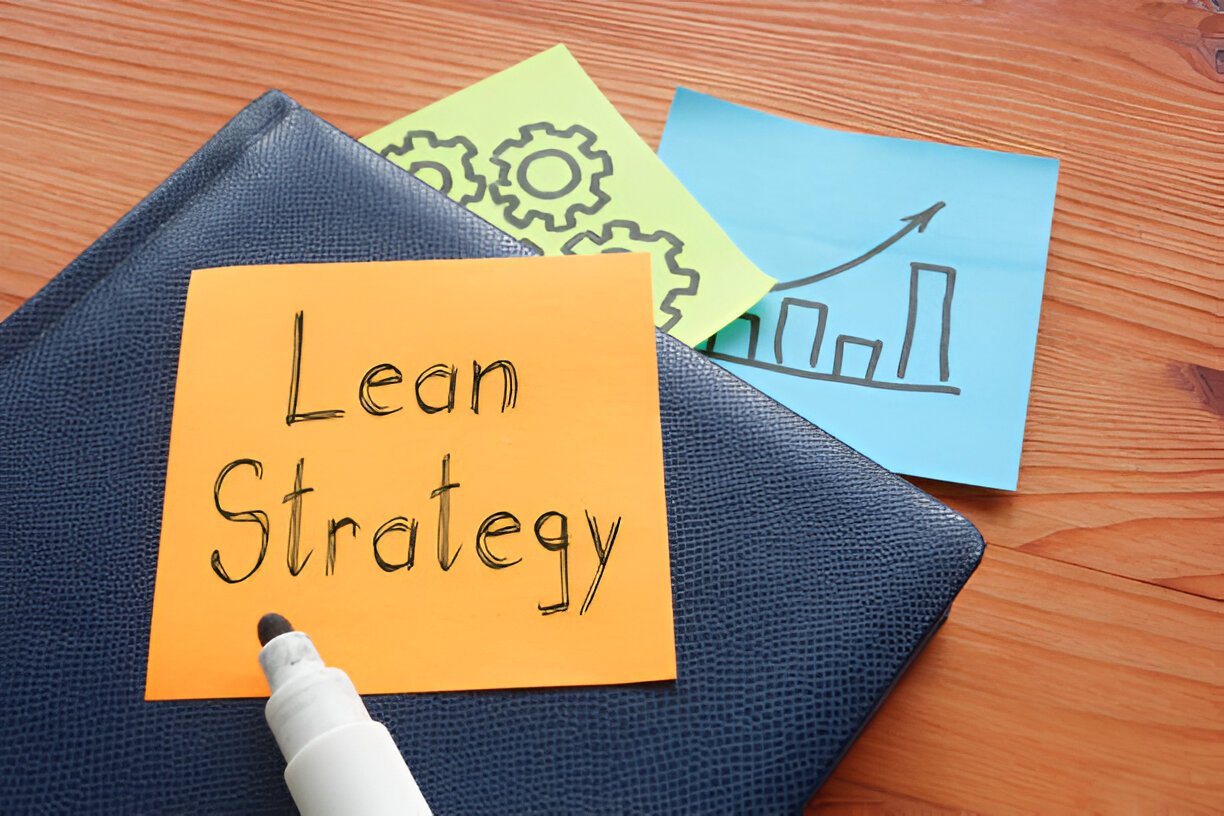Supply chains power the modern world. From manufacturing to distribution, everything depends on a well-structured supply chain.
But what makes a supply chain strategic?
A strategic supply chain isn’t just about moving goods from point A to B. It’s about optimizing the entire process, reducing costs, improving efficiency, and ensuring resilience.
Whether you’re a beginner or an industry expert, this guide will walk you through everything you need to know about strategic supply chain management.
1. What is strategic supply chain management?
Strategic Supply Chain Management (SSCM) is the long-term planning and optimization of supply chain activities to achieve business goals.
It’s different from traditional supply chain management, which focuses on daily operations. Instead, SSCM looks at the bigger picture—aligning logistics, procurement, and inventory with overall business objectives.
Why is strategic supply chain management important?
A well-planned supply chain delivers:
Cost savings by eliminating inefficiencies
Faster deliveries to enhance customer experience
Optimized inventory management to prevent overstocking or shortages
Stronger supplier relationships for smoother operations
Resilience against market fluctuations and risks
Now, let’s break down how it works and what makes it strategic.
2. Core components of strategic supply chain management
Strategic supply chain management consists of multiple interconnected components that work together for efficiency and success.
1. Supply chain alignment with business goals
Your supply chain should support your company’s mission.
For example:
- A luxury brand focuses on premium quality and exclusivity, so it prioritizes high-end suppliers and controlled production.
- A fast-fashion brand prioritizes speed and cost-efficiency, meaning they need flexible suppliers and rapid logistics.
2. Technology integration
Advanced technology is transforming supply chains, making them smarter and more efficient.
AI & machine learning – Predicts demand, minimizes waste, and optimizes logistics.
IoT (Internet of things) – Real-time tracking and monitoring of shipments.
Blockchain – Enhances security and transparency in supply chain transactions.
Robotic automation – Speeds up warehousing and order fulfillment.
Companies that integrate technology gain a competitive advantage in efficiency and accuracy.
3. Supplier and vendor management
Strong relationships with suppliers ensure:
Reliable deliveries
Better pricing and terms
Reduced supply chain disruptions
Big brands like Apple and Toyota have strategic supplier partnerships to maintain consistent quality and innovation.
4. Logistics & distribution optimization
Strategic logistics ensure cost-effective and timely deliveries.
Amazon’s warehouse network allows same-day or next-day delivery in many locations.
Walmart uses advanced logistics software to reduce transportation costs.
3. Key frameworks & strategies in SSCM
Understanding the core frameworks and strategic models is essential for building a resilient and efficient supply chain.
The four types of supply chain strategies
Businesses adopt different strategies based on their industry needs:
- Efficient supply chain – Focuses on cost reduction and large-scale production. Best for stable industries like consumer goods.
- Risk-hedging supply chain – Reduces risks through multiple suppliers and backup stock. Essential in volatile markets.
- Responsive supply chain – Prioritizes speed and adaptability. Used in industries like fashion and electronics.
- Agile supply chain – Combines efficiency and flexibility to adapt to sudden market shifts.
The 7 C’s of supply chain management
A strong supply chain follows these principles:
- Customer focus – Meeting customer demands efficiently.
- Configuration – Structuring the supply chain for optimal performance.
- Collaboration – Working with partners for seamless operations.
- Coordination – Ensuring smooth workflow across all functions.
- Commodities – Managing inventory and raw materials efficiently.
- Communication – Sharing real-time data and insights.
- Cost efficiency – Reducing waste and unnecessary expenses.
The 5 W’s of supply chain management
Answering these five questions ensures a strategic approach:
Who? – Suppliers, manufacturers, distributors, customers.
What? – Products, materials, and services.
When? – Scheduling and timing of operations.
Where? – Sourcing, production, and distribution locations.
Why? – The business objectives behind the strategy.
The 7 R’s of supply chain management
A strategic supply chain ensures the Right product is delivered in the Right quantity, in the Right condition, at the Right place, at the Right time, to the Right customer, and at the Right cost.
4. Best practices in strategic supply chain management
Implementing proven strategies helps businesses streamline operations, reduce costs, and enhance overall performance.
Aligning supply chain strategy with business goals
Every company has different objectives. The supply chain strategy should align with those goals.
For example:
- Tesla’s supply chain is focused on vertical integration to maintain control over production.
- McDonald’s focuses on supplier partnerships to maintain consistent quality.
Risk management & resilience
A strong risk management plan prevents supply chain disruptions.
Expanding your supplier network reduces dependency and ensures a more resilient supply chain.
Keep safety stock to prepare for demand spikes.
Use predictive analytics to identify risks early.
Technology & automation for optimization
The future of supply chain management is automation.
AI-driven forecasting helps businesses predict demand fluctuations.
Drones and self-driving trucks are changing logistics.
Blockchain ensures secure and transparent transactions.
Companies that embrace digital transformation stay ahead.
5. Case studies: Real-world examples
Examining real-world success stories provides valuable insights into how companies optimize their supply chains.
1. Amazon: Supply chain excellence
Amazon’s supply chain is built on speed and automation.
Uses AI-driven logistics to optimize routes.
Invests in robotic warehouses for faster order fulfillment.
Leverages predictive analytics for better inventory management.
2. Apple: The power of supplier partnerships
Apple’s supply chain strategy revolves around exclusivity and quality control.
Maintains long-term relationships with suppliers.
Uses Just-in-Time (JIT) inventory management to reduce waste.
Focuses on innovation to stay ahead of competitors.
6. Future trends in strategic supply chain management
Emerging technologies and shifting market demands are shaping the future of supply chain management.
Sustainable & green supply chains
Companies are focusing on eco-friendly practices.
Using electric trucks and alternative fuels.
Implementing recycling and circular supply chain models.
Choosing green suppliers to minimize environmental impact.
AI & blockchain integration
AI and blockchain will redefine supply chain management in the coming years.
AI will automate demand forecasting and decision-making.
Blockchain will eliminate fraud and improve transparency.
Smart contracts will ensure secure supplier agreements.
7. Conclusion: How to master strategic supply chain management
To succeed in today’s competitive world, businesses must move beyond traditional supply chains.
Align supply chain strategies with business goals.
Invest in technology and automation.
Build strong supplier relationships.
Prioritize sustainability and risk management.
A well-managed supply chain isn’t just about efficiency, it’s about creating value for customers and businesses alike.
Call to action
If you want to strengthen your expertise in strategic supply chain management, investing in professional training is a smart move. BRASI (Business Research and Service Institute) offers comprehensive supply chain management courses designed for both beginners and experienced professionals. These courses cover essential topics like procurement, logistics, demand planning, and risk management, helping you stay ahead in a competitive industry.
Want more insights? Subscribe to our newsletter.
Have a strategy that works for you? Share your thoughts in the comments!

We have been offering extensive and well-planned pieces of training in the field of economics, supply chain, and operations management. Our core purpose is to help industry professionals and businesses to succeed in an ever-evolving competency in the jobs market. Our cutting-edge training methods and up-to-date knowledge aligned with the latest industry trends and demands put our candidates in the lead amongst other job seekers and competitors in the market.
- BRASI Editorial Team#molongui-disabled-linkSeptember 3, 2024
- BRASI Editorial Team#molongui-disabled-linkOctober 8, 2024
- BRASI Editorial Team#molongui-disabled-linkNovember 19, 2024








